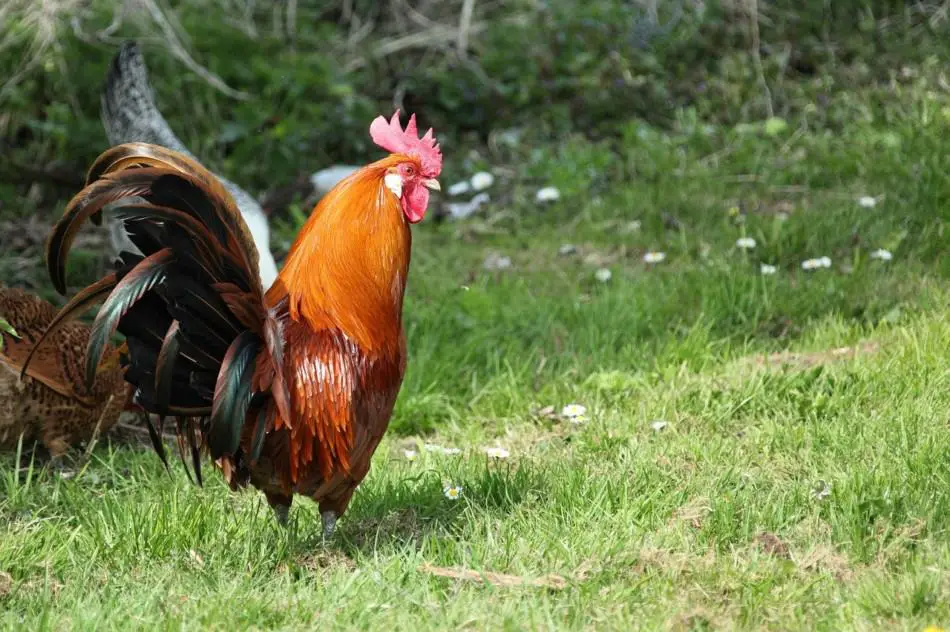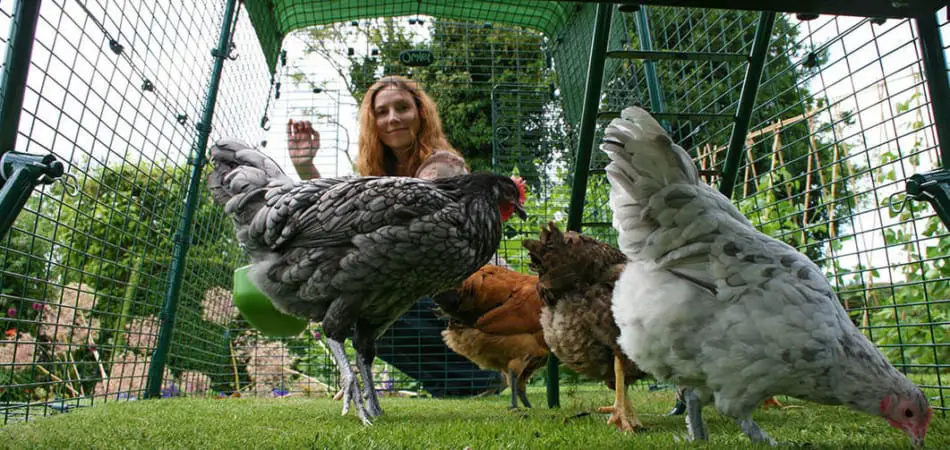If you want to know what a male chicken is called, you actually have a menu of names to choose from. Not ‘Jeff’ or ‘Bill’ but rooster, cock or cockerel!
Poultry comes with its own vocab and a range of terms that can help owners describe their feathered friends with pinpoint precision.
If you are keeping hens at home, it’s well worth learning the lingo which can help if you are speaking to other chicken keepers, veterinarians or when purchasing supplies.
Here is a handy glossary of the top 20 terms for describing chickens. Read on and you will be able to tell the difference between your broilers and your biddy’s in no time!

Table of Contents
What is a Male Chicken Called? 20 Key Names and Terms
Bantam
Bantams are any chickens which have consistently smaller sizing, proportions and eggs when mature than other chicken varieties and breeds. They are named after an Indonesian port where miniature native poultry was sold and are popular as ornamental pets.
Biddy
A biddy is a laying hen that is over one year of age. These hens are considered older and more mature in poultry farming. This female term has also been appropriated to refer to chicks too.
Boiler
A boiler chicken is a relatively older meat chicken of six to nine months of age. Given its age, its meat may be more gamey and tough, making it best consumed in stews and other slow-cook recipes.

Broiler
Broilers are classic meat chickens that are bred and reared specifically for that purpose. Broilers are quick growers and are usually ready for market, or your plate, in around 6-8 weeks.
Broody hen
These are laying hens that express and exercise their innate desire to ‘brood’ or sit on a clutch of eggs and hatch them. Broody hens make great incubators for fertile eggs, though some are more meticulous than others.
Capon
A Capon is a male chicken that has been castrated before reaching sexual maturity, resulting in less aggressive males that can be reared in groups without aggression.
Their flesh is known to be less gamey and more flavorful than that of cockerels and hens, making capons desirable, in some quarters, as a premium food.

Chick
These are baby chickens which range from newly hatched day old chicks to the 6-week stage where they become known as pullets if they are female and cockerels if they are male.
Cock
This is a male chicken over the age of one year. It is an alternate name for mature male chicken or rooster.
Cockerel
This is a young male chicken from 6-8 weeks of age up until one year.
Fowl
Fowl is a general term for domesticated birds including chicken. They may be landfowl like chicken or turkeys or waterfowl like ducks.
Fryer
Fryers are young chickens that have been raised for meat. They are usually between seven to ten weeks of age, with a weight of up to 2 kg (4.5 pounds) at slaughter.
Gallus Domesticus
This is the Latin name for chicken which are the most populous of domesticated fowl and are thought to have been bred from Junglefowl (the Gallus genus) in Asia. They have been kept by man for thousands of years!

Hen
A hen is a female chicken that can lay hens. Laying usually commences at around week 18 of life.
Layer
Layer hens are bred purely for their laying capabilities. Layer hens are selected for their high level of fertility, frequency of laying, and the quality of their eggs.
Point of lay
Point of lay chickens are female chickens (pullets) that are at a stage of maturity where they ready to lay eggs. This is usually between 16 to 20 weeks of age.
Pullet
Pullets are young female chickens that have progressed in development from being chicks but are not yet sexually mature and able to lay. Pullets become hens at the point of lay which is between 16 and 20 weeks.
Purebred
Purebred chickens are derived from formally recognised chicken breeds and have a father and mother who were both pure breeds. They usually have distinct features, characteristics and names and have been carefully bred using selective methods over several generations.

Roaster
This is another term for a meat chicken. Roasters are bigger older birds, around seven to eight months, and weigh in at 2.3kg (5 pounds).
Rooster
Named after the roost that he will jealously guard, a rooster is an older male hen. The name is thought to have been first used by the Pilgrim Fathers who shunned the use of the English term ‘cock’, due to its unsavoury connotations.
Spent hen
A spent hen is a laying hen that has completed its peak reproductive lifespan and is in decided decline. In commercial settings, a spent hen is culled at 72 weeks to make room for more productive layers.
Conclusion: Glossary Chicken Terms
We hope you have found this list names and terms for chickens helpful. As with many names, precise definitions and terms are open to a healthy debate. Do you have any feedback or alternate chicken terminology? We would love to hear from you in the comments below.
Happy hen keeping.





